Welcome back to Get Your Shit Together August! I hope you found last week’s post helpful! This week’s is obviously up a little later in the day, and that’s because, in true shitshow fashion, I did not take my photos last night and didn’t realize until I went to post them that I needed to black out some of the work information. WHOOPS. Which is a good reminder that this series is about trying to get your shit together if you’re a shitshow, and your shit will never truly be as together as you wish. That’s just life, tragically.
Anyway, I’m sure that bullet journaling is old news to most of you. It’s been scientifically proven* that 99.9%** of our listenership are librarians, aspiring librarians, librarian spouses, librarian BFFs, ex-librarians, library ghosts, three libraries in a trenchcoat, cardigan salesmen, etc, and librarians are notoriously Ahead of the Organizational Times. My library bros have been talking about bullet journaling for months, maybe years. When Renata and some other Twitter bros started doing it, I googled it out of curiosity and was immediately overwhelmed by the website, unable to entirely grasp what the process was like or how it could be helpful to me. I put it out of my mind, and it stayed there until this spring/summer when Kelly Sue DeConnick and the Bitches Get Shit Done group started to pick up the habit.
Kelly Sue started to keep a bullet journal and started occasionally tweeting and tumbling about it. Again, I looked at it and felt totally overwhelmed and put it out of my mind. But it was Kelly Sue AND a lot of office supplies seemed to be involved AND all my friends were starting to dip their toe in the water AND I’m a sheep desperate to be liked, so I decided to try again. Having already perused the website and come away with little-to-no useful information, I turned to google. I managed to find a few blogs that went into detail about how and why bullet journaling can be helpful and began to suspect that it might be the sort of thing I needed to add some organization to my mess of a life.
So, What Actually Is a Bullet Journal?
I’m primarily writing this as a resource for all the people who ask me questions about bullet journaling, so let’s start at the beginning. A bullet journal, as I use it, is a one-stop repository for all your to-do lists, planners, notes, and calendars. It’s one book that holds all of your things together in one place so you don’t have to worry about juggling ninety different organizers and it’s fully customizable, so it can be exactly what you need it to be.
That’s right, you can buy a branded bullet journal made for that purpose, but literally any notebook that you have lying around can be turned into a bullet journal. Everything that’s in it, every “module” that you need, is created by hand, customized to what works best for you. Just any notebook and a pen and you’re ready to go.
That Sounds So Simple That It’s Confusing
I know, I know, sometimes simplifying things that much just makes them overwhelming, but this isn’t, trust me. It’s really just a set of customizable tools shoved into one book. The reason (besides a really poor explanation on the website) it seems so overwhelming, I think, is because the same tools aren’t helpful to the same people.
At its core, it’s basically a way to very quickly write daily to-do lists and events. You put each item/event on its own line with some sort of bullet notation at the end, and as you work on each task, you modify the bullet. For example, I make a square next to each item on my to-do list. When I finish something, I fill the square in. When I start something but don’t finish it, I fill in half the square. If I don’t get to it, I draw an arrow inside of it to remind me to add it to tomorrow’s list.
Okay, But What About All Those “Module” Things?
Since the goal is to keep all your shit together, a lot of people add additional tools or “modules” to their journal to track things outside of daily to-do lists. For example, I have a monthly calendar and a monthly goal list at the start of each month to keep track of things long-term. I’ve seen people put in charts to track hydration, add stickers to indicate what days they went to the gym, keep lists of books to read and long-term projects to work on, etc.
Essentially, take a moment to think about your life and your brain and what the best way is to remember things. What kinds of charts/calendars/lists are helpful to you? What sort of things do you want to keep track of? Those elements become the basis for your modules.
But I’m Not Sure What’s Helpful to Me Yet!
So, like I said, I was really overwhelmed by the bullet journal website and even blog entries were a little confusing. It was hard to tell what would actually be useful or what only sounded useful because the blogger found it to be such. My solution to this is 100% my biggest tip for future bullet journalers.
Go to YouTube. Search for “bullet journal.” Queue up a bunch of videos of people giving walkthroughs of their bullet journals (there are a million of these). TURN OFF THE SOUND.
Turning off the sound is KEY. As you watch the video, if you can immediately understand and identify a particular tool/way of organizing things, take a screencap or make note of it. You’re looking for tools that your brain understands organically, that it doesn’t have to put any additional thought into comprehending. If you need to force yourself to remember to list things in a certain way or go through a particular process to note something, it’s gonna be extra work and you’re either going to forget or start to be overwhelmed by your own organizational tools.
When you’re done, look through all your screencaps and notes and see which ones are actually relevant/something you care about. I have friends who keep track of how hydrated they are. They make cute little charts, and while I like the idea of cute little charts, I’m pretty good at drinking enough water and wouldn’t really have any use for a page telling me all the times I drank enough water versus times I didn’t.
And that’s the key–there’s no rigid system you HAVE to follow. Tweak things to fit your needs! The original bullet journal gets its name from the bullet you put to the left of each item, a bullet that’s altered into other shapes based on progress on the item. There were a lot of little symbol and alterations that just seemed like too much for me, so I did away with the bullet altogether. I use a notebook with grid paper and outline the box next to each item. Like I said above, when I finish it, I fill it in. If I make some progress but don’t finish, I fill it halfway. If I’m migrating it to be completed the next day, I draw an arrow in it. If I’m cancelling it altogether, I squiggle it out. Simple. Straightforward. Tweaked to fit the way my brain works.
Yeah, Okay, But I’m a Visual Learner and You Haven’t Actually Given Us a Clear Picture of What the Final Product Is
Good point.
Here are some pages from my current journal.
This is a typical DAY IN THE LIFE. Well, two days. You can see how I moved shit from the 10th to the 11th because I didn’t finish (or even start) them on the 10th. You can also see all the notations in action–the filled in square of a job completed, the half-square for shit I started but didn’t finish, the square with the arrow for stuff that migrated and the actual arrow for notes to remember in the future. Oh, and the little asterisk I use when I take notes, too!
Because, as you can see below, I use this thing as an all-in-one chronicle of my life. In addition to keeping all my work and personal to-do lists together, it’s become kind of a scrapbook, too. I take notes on things I want to remember, record stuff about my day, and paste in stupid scrapbooky stuff like ticket stubs and cast lists. This first page is from when I went to Hamilton the first time and word vomited EXTENSIVE notes on what I wanted to remember.

And this page has some important random events listed with asterisks at the top–dumb stuff that I knew I’d want to remember, but isn’t like, crucial to my well-being (haha j/k it’s super crucial that last bullet isn’t a joke me and my trash compactor bros are def planning a trip to Chicago). Below that is some quick Ghostbusters first impressions.
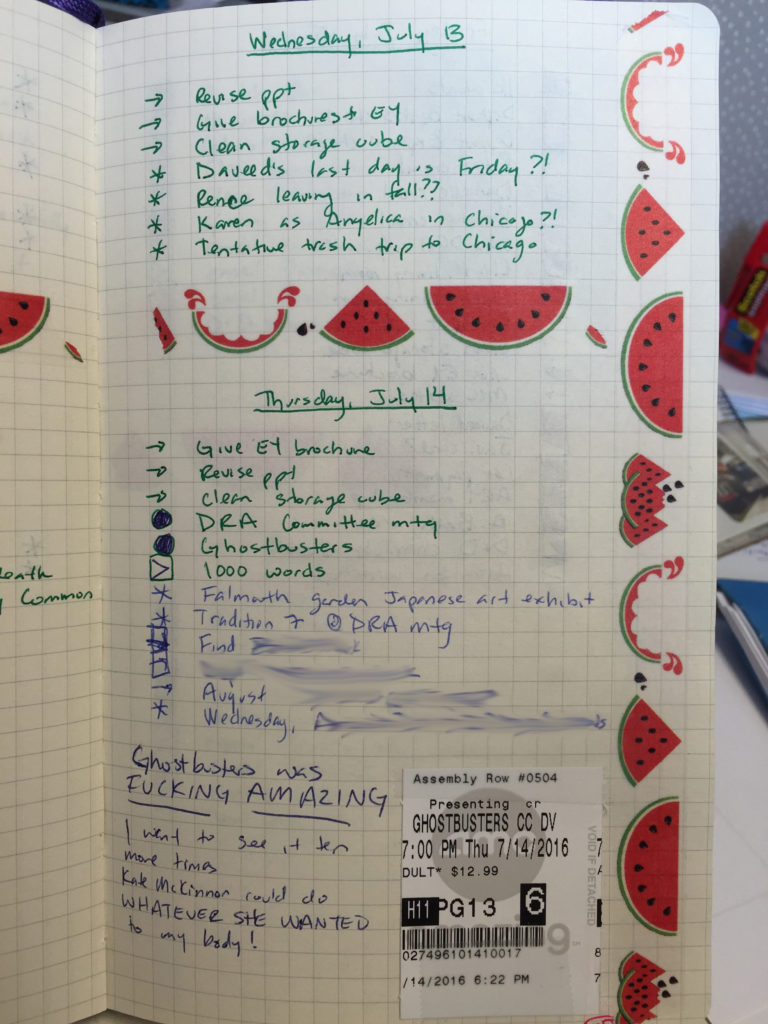
I start each month with a full calendar spread so I can see stuff I need to do at a glance, in a format that my brain is familiar with and can read quickly:
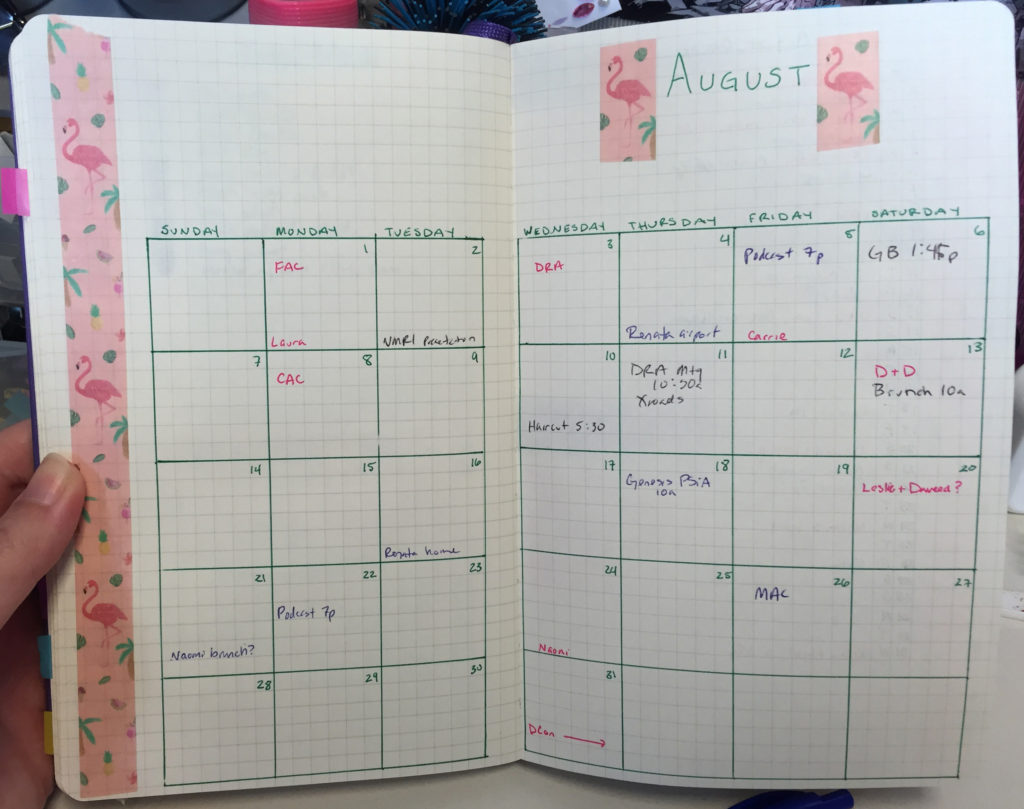
And then I also do a more truncated breakdown next to my monthly overview of Stuff To Remember:
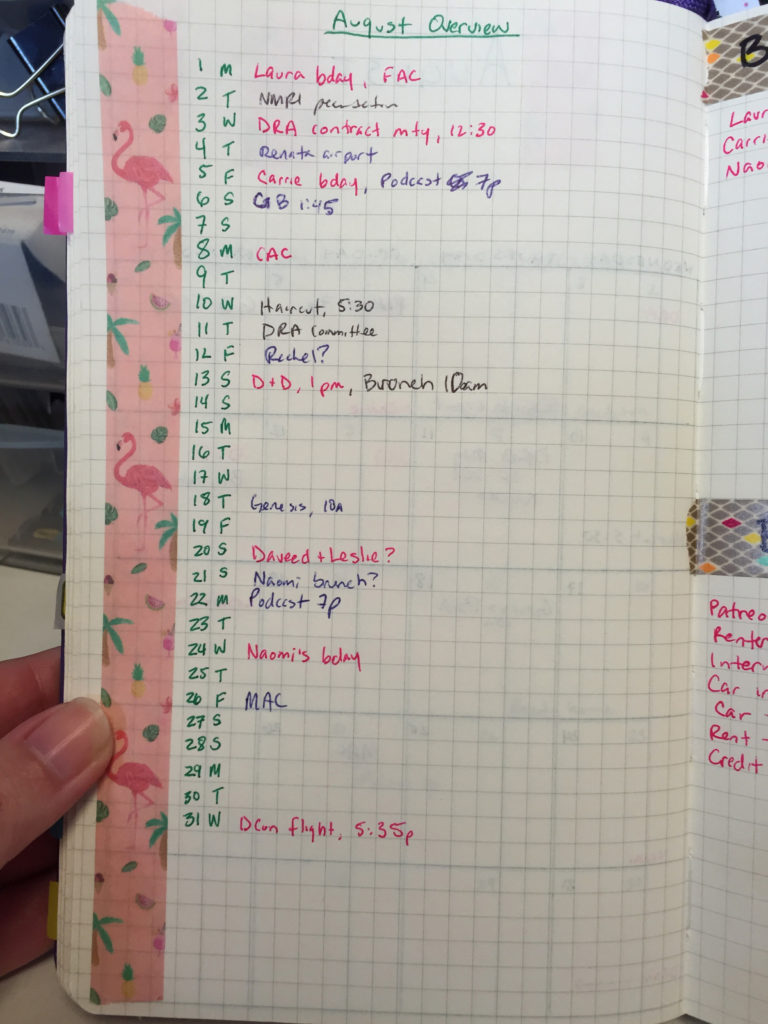
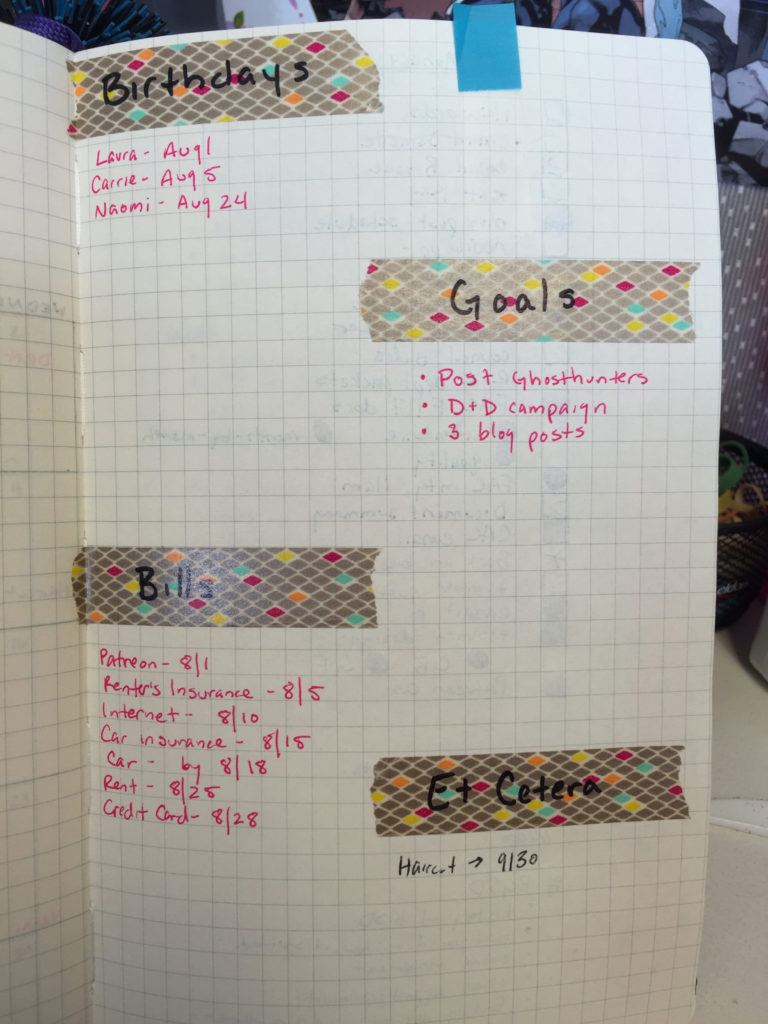
Finally, here’s what my notation key looks like. That was important in my first journal for the first couple weeks, but now all of this is so ingrained that it’s only there in case I die and my bullet journal becomes the key to unlocking an exciting mystery, but the young, enthusiastic detective and her hardened, sarcastic partner can’t decipher what the symbols mean:
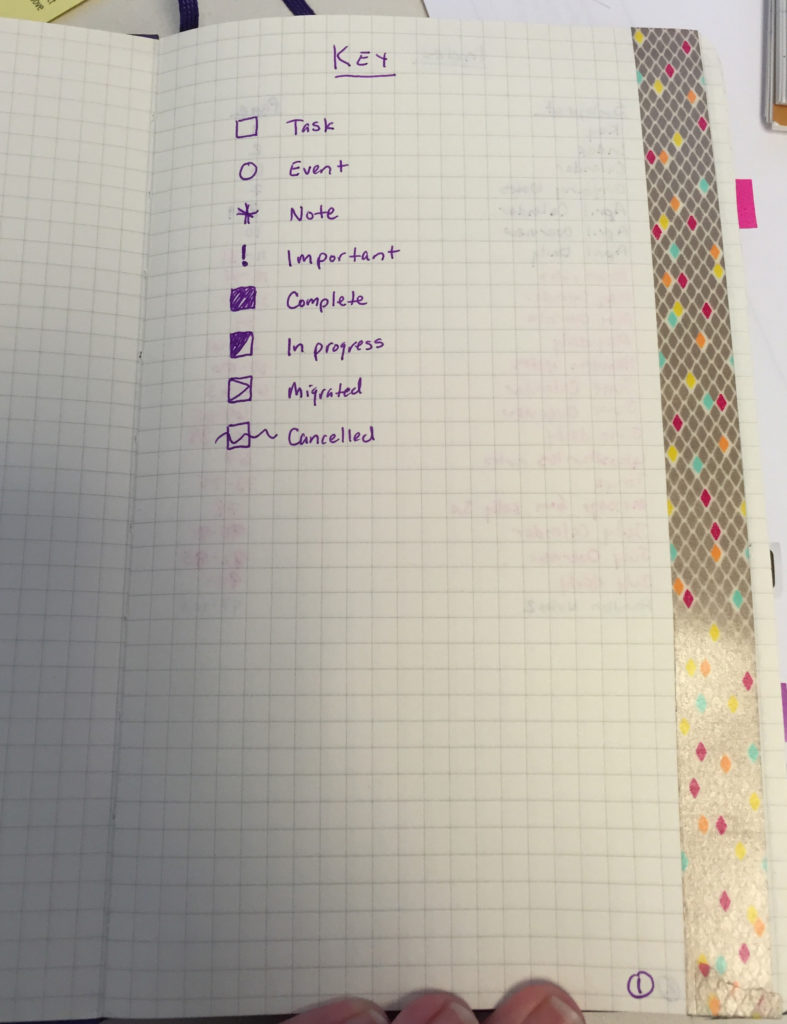
Then I have a table of contents, which is generally helpful…:
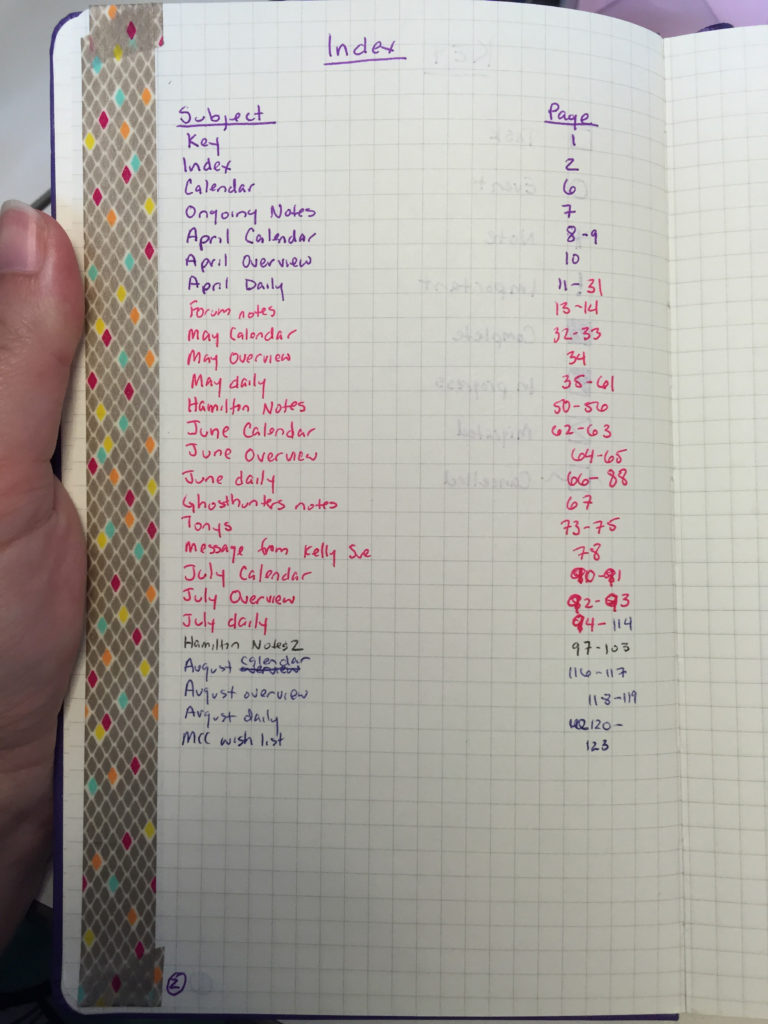
…but I also flag all of the things I’ll want to go back to, so I don’t have to use it that often in the long run:
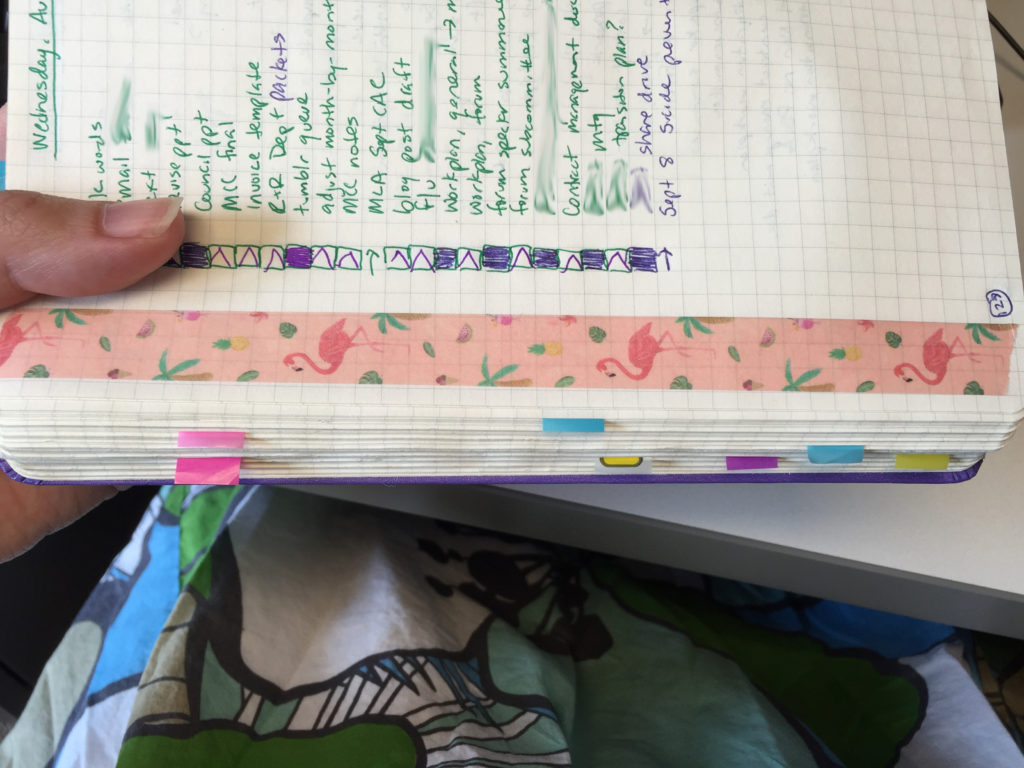
Also helpful to me: a calendar of the next however many months, for keeping track of dates and the general passage of time, as one does:
Okay, That Was All Helpful, But I Don’t Think I’m Artistic Enough For a Bullet Journal
Uh, bro, did you just look at those pictures? With the exception of the string of washi tape on the edge of each page, I’m the opposite of fancy. I don’t know calligraphy, my handwriting is garbage, I cross shit out and scribble all over the place if I need to. I know The Teens on instagram and tumblr make it look like bullet journals have to be works of art, but, seriously, it’s a fucking to-do list. I like to use the washi tape because it’s adorable and this gives me an excuse to buy a new roll each month and actually use it. It also helps me delineate between different months. But you could be using a pencil and a composition notebook and still get the same results.
Bottom Line: Does it Help?
Yes! It really has helped me! I am not like…super great at doing everything I need to do every day, but since I started using it, I’m at least better at knowing what I need to be doing and keep track of what’s not done yet. Part of this is a consequence of my job: I usually get my entire week’s worth of work assigned on one day. If I do it all immediately, I’d be twiddling my thumbs all day.
That doesn’t mean I sat down, threw one of these babies together, and instantly everything worked out, though. My first journal was definitely a learning experience. I had a bunch of modules that seemed important, but just didn’t work for me–I had a chart in the front to track writing every day, I had my tasks separated into “work” and “home,” and I tried to use all of the “official” bullet journal notations. It…did not go well. I could never remember what all the symbols were supposed to mean and I kept using their “priority” notation for my random notes notation. I never remembered to go back to the charts in the front of the book to track reading and writing. “Work” and “home” separations got tricky when I began to add new tasks to the list after I had already written out the ones I had at the start of the day.
I began to tweak as I went along. I threw out the official bullet journal notations and started using the squares in my grid paper to make my own, ones that made more sense to me. I gave up on separating tasks and started to make a daily “write x words” or “write for x minutes” task instead of keeping track via a grid. I stopped keeping a separate section for “memories” and just wrote down what I wanted to remember on the actual pages of the journal for those days. I added the Birthdays/Bills/Goals/Etc overview page instead of making a list of those in the front.
It’s definitely not a one-size-fits-all organization method and it definitely might take some time to get into the groove. My journal might look like a confusing mess to you, but to my confusing mess of a brain, it’s the most efficient way to do things. The goal is to ignore what you’re “supposed” to do with it, what it’s “supposed” to look like, and how everyone else is setting up their journal and just do the thing that will help you the most.
I hope this was helpful to the .00001% of you who have never heard of bullet journaling before, and I hope it made more sense if you’ve heard of it and have been overwhelmed by the effort it seems to involve.
If nothing else, I hope you appreciate how cute my washi tape is. (SO CUTE look at those flamingos!)
Next week: the joys of anti-depressants!
* Not really.
** I made this number up, but it feels accurate in my soul.

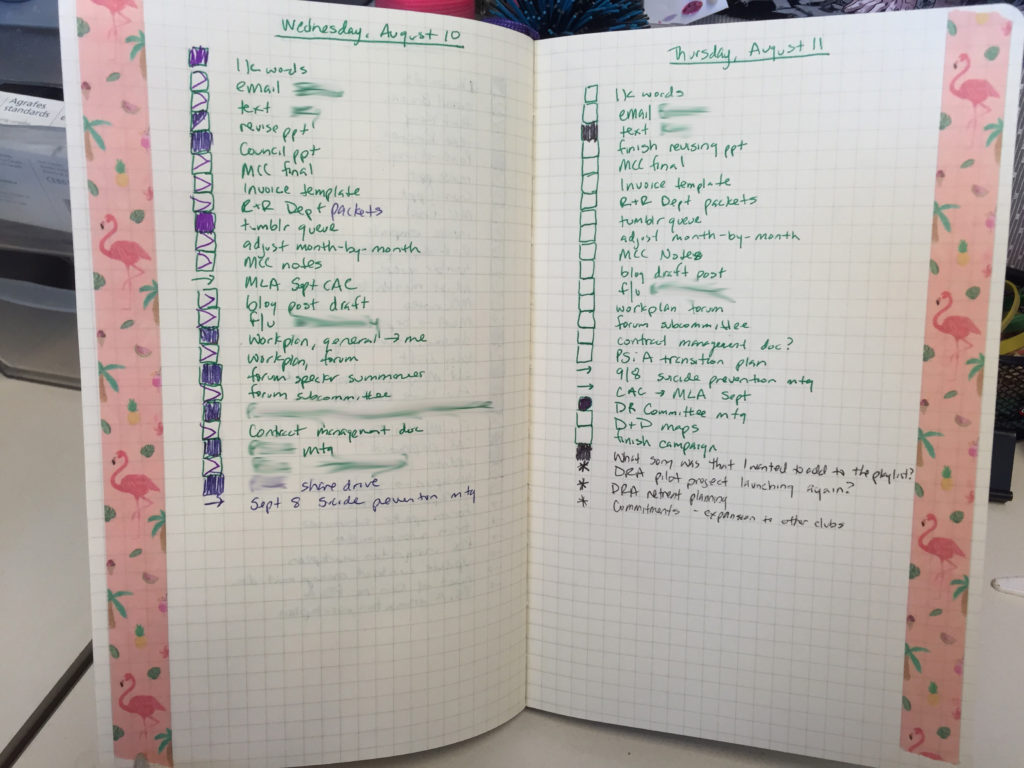
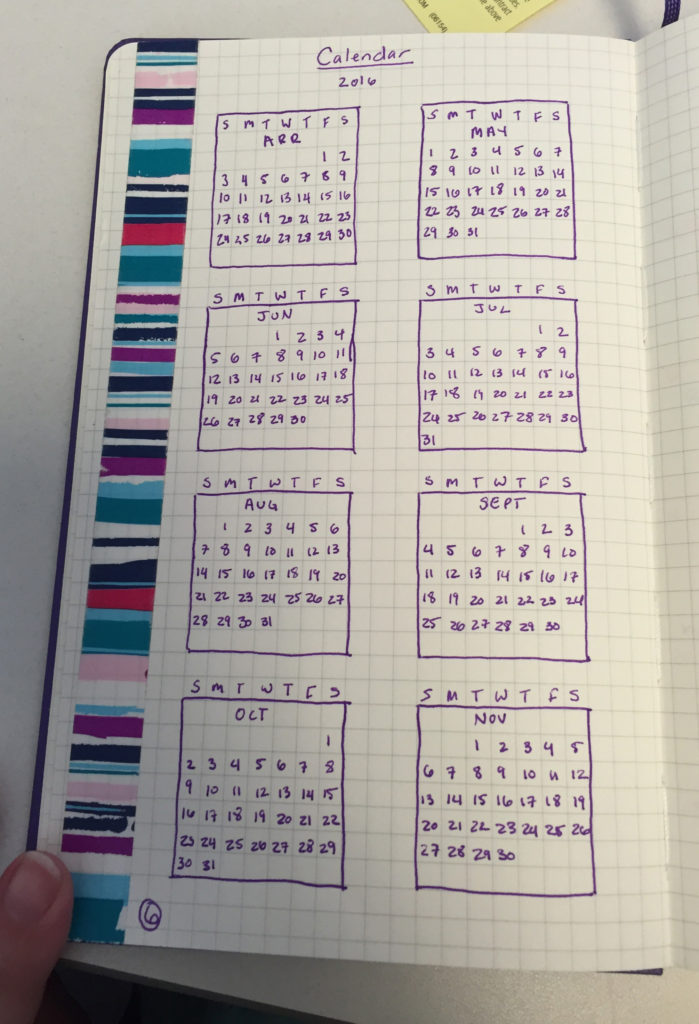
Thank you for this! I had never heard of this before despite spending way too much time on the internet. This is all really helpful, especially the photos, and I’m now planning lots of new ways to fix up my horrendously messy notebooks to be more useful to me. 🙂
Yay! I’m glad it was helpful! I think it’s a really excellent tool and I’m actually pretty annoyed that the official website makes it seem so confusing. I hope you get a lot of use out of it!
My library is having a program on this in January. I am advertising it as a New Year’s Resolution/get organized event. Thankfully I have a work colleague who uses bullet journals and she will be presenting the program. A bullet journal is a little too OCD for me and that is shocking since I am very OCE about stuff.
One of the better explanations I’ve read, thanks for posting. And I’m glad I’m not the only one who went to the official website and came away thinking, “What do I do now??”
(And I think I might get the title of “worst blog” — I went to find the url and I haven’t updated in over a year??!? Yikes. No wonder my publishers hate me. :P)